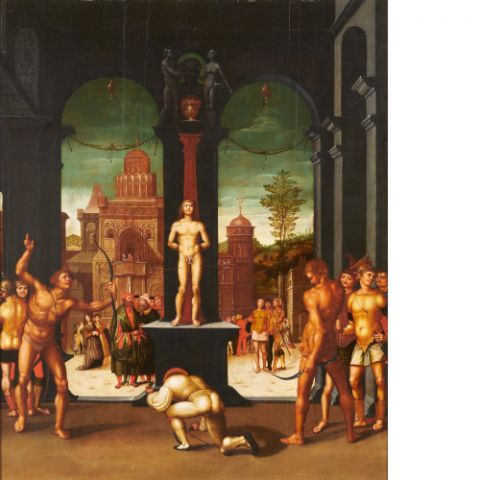
Lot 1127 | King Frederick William IV in Hunting Costume
7.920 €
1833 - 1898
Title: King Frederick William IV in Hunting Costume.
Technique: Zinc casting.
Height: 66cm.
Notation: Inscribed on the plinth: Waagen fecit 1855.
Foundry Mark: on the back of the plinth Foundry inscription: Verlag / A. Meves Berlin.
Frame/Pedestal: Base (94cm).
Provenance:
Private ownership, Germany.
At the latest since the World's Fair held in London in 1851, Prussia had been on everyone's lips as a stronghold for zinc casting. Considerably cheaper, yet impressively sharp and thus perfectly suited for sculpture, the material had caused a furore within a very short time. Prussia had already established itself as a centre for metal casting in the early 19th century. The reason for this was undoubtedly the extensive building activity of Friedrich Wilhelm IV, which created the need for it and at the same time set artistic standards. It was not only the quality of the casting that was to lead to the works gaining renown far beyond the borders of Prussia. The decisive factor was above all the fact that the models came from the most important representatives of the Berlin school of architects and sculptors.
We are pleased to be able to offer in this auction four Prussian sculptures from a private collection in southern Germany, which were produced in iron and zinc by the Royal Iron Foundries in Berlin and Gleiwitz, among others, or by the private Berlin foundries H. Gladenbeck and A.A. Meves.
The objects on display are highly interesting carpentry monuments from an art-historical point of view, which became established for private interiors from the 1850s at the latest. In part, they were conceived from the outset on a small scale (lots 1129 and 1126), in part monumental monuments from the public domain were scaled down (lots 1128 and 1125).
The high rank of carpentry monuments is illustrated by the reduction of the famous equestrian statue of Andreas Schlüter by Elector Friedrich Wilhelm of Brandenburg, which is today located in the courtyard of honour of Charlottenburg Palace. The present more manageable example of the 'Great Elector' (lot 1128) from August Kiss is distinguished by its royal provenance: It comes from the possession of the Electors and Kings of Hanover and first came back on the market in 2005 at the auction of the art possessions of the Guelphs.
Another example of the popularity of carpentry monuments is the zinc cast replica of the equestrian monument of Frederick II by Christian Daniel Rauch (lot 1125), unveiled in 1852. The monumental statue was reduced from 13.5 metres to 81 cm for personal contemplation. Without sacrificing richness of detail, it reflects one of the most important works of the Berlin school of sculpture one-to-one.
The statuette of King Frederick William IV on a square plinth after a model by Carl Cauer (lot 1126) is of a completely different conception: while Andreas Schlüter had the Great Elector riding in a classical ruler's pose, Cauer presented a passionate builder in a contemporary overskirt and coat. Frederick William IV is depicted in a relaxed contrapost pose while holding the ground plan of the Church of the Saviour in Sacrow in his left hand. This statuette is probably the last work of art created during the Prussian king's lifetime. It can be assumed that the Cauer figure was commissioned by the court itself as a memorial statuette immediately after the death of Frederick William IV in 1861. A much smaller version executed in Rome in 1860 can be found today in the new Orangery in Potsdam.
A final highlight is lot 1127. The statue shows the Prussian king in a rather bourgeois pose, which precludes its use in public spaces. The zinc casting is one of two known examples to date, the second being in Charlottenburg Palace.
| Recommend lot |
Conditions of this Lot
32% buyer’s premium on the hammer price
Estimated shipping costs for this lot:
Arrangement after the auction.
Arthur Waagen Germany Classicism 19th C. Bronzes Historical people Bronze Prussia


